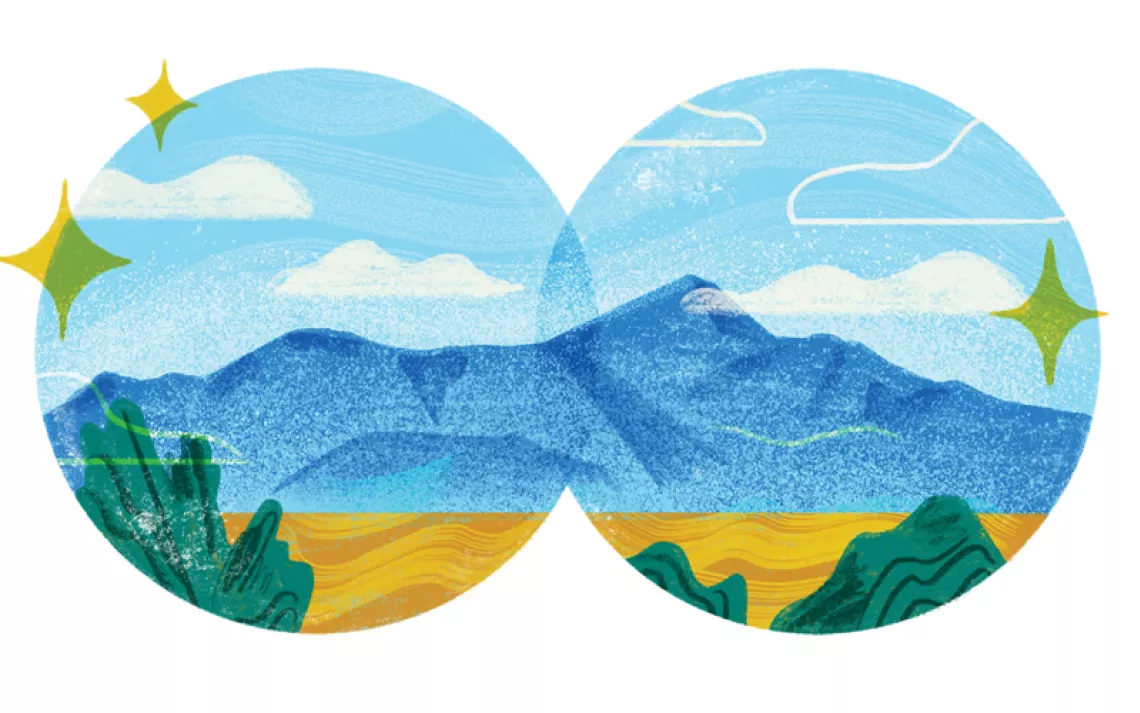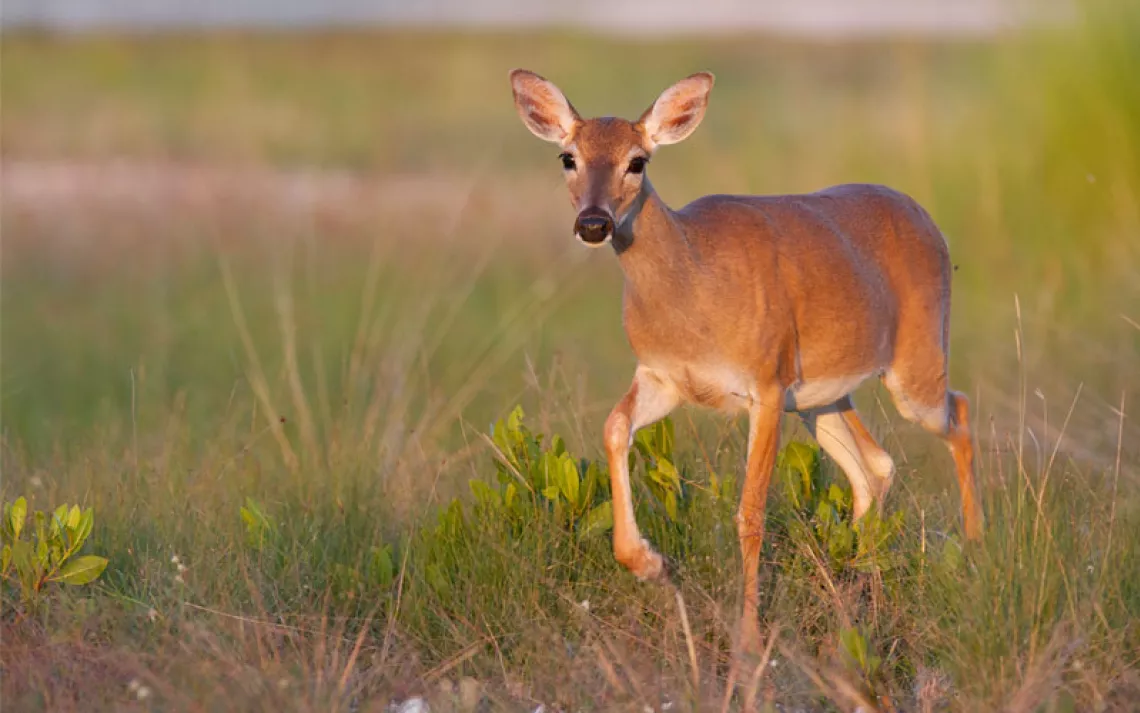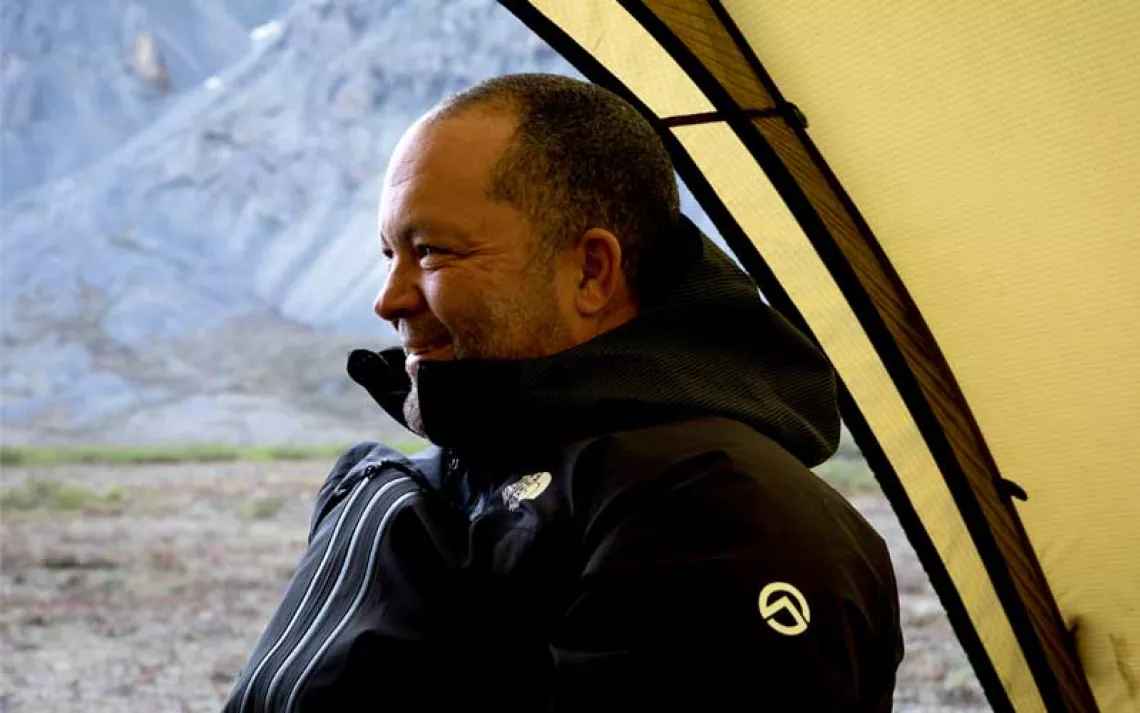I Know I'm Not Seeing Everything As I Stare Into the Brush
Out here, there's no clear delineation between predator and prey

Illustration by Hokyoung Kim
A fluffy black cat showed up recently at our ranch. The closest house is over a mile away. Coyotes and hawks patrol the gusty fields in this valley in southwestern Montana. I picture a black dot weaving and cowering for miles until she found our shed. She was scared of people, but she decided my parents were less likely to eat her than the things rustling in the brush and diving through the fields.
The cat joined a stream of creatures that came blinking and hissing into the light of domesticity. Last winter, a western grebe swam tiny laps in the bathtub until the river melted enough for us to release it on the banks. There were garter snakes the size of fingernail clippings, a calf born without hair, tomcats with swollen faces, a nighthawk with a broken wing, a baby bird with a maggoty infection, and a dozen orphaned cottontails.
The baby bunnies inspired a beloved family anecdote. As a kid, I peered into the box at the tiny, bald creatures. "Can we keep them until they're dead?" I asked. That was the likely end for so many creatures found flopping or mewling in the fields. Sure, the grebe lived to dive into the river. The hawk spent years peering around murderously at a wildlife center. But mostly, the animals slipped off one by one in a cozy box by the heater or died alone in the night, body broken and heart thumping in an alien, linoleum land.
I didn't take their deaths personally. I might not have accepted aid from whatever broke me, either. A tractor flattened the mother rabbit. A car snapped the hawk's wing. When my father drives the hay baler, coyotes and seagulls follow to feast on exposed and wounded mice. And now there's the new cat, with her unexplained past lives. She growls when the coyotes cry. She also rumbles at my dad, despite his soft words when filling up her food dish.
I watch across the fields as the occasional outline emerges from the foliage. I squint to distinguish elk from moose before the shape flickers back to hidden.
There are animals everywhere if I look long enough. Ground squirrels stare up at the wide sky and vanish with a squeak. Goldfinches and red-winged blackbirds flit by, mocking the sage and cerulean landscape with their clean primary hues. A tawny suggestion morphs into a coyote seeking something to howl about.
There are plenty of strange glimpses too. My mother once spotted something large on a haystack. The shape saw her, leaped down, and was gone. It was a mountain lion waiting for prey to pass, according to a man who hunts big cats. Another time, my father watched antelope graze. The herd tightened up and took off. My father turned to see a wolf trotting after them. And then there's the old story of the stranger. A man in camouflage sprinted across the field and disappeared into the trees. I know I'm not seeing everything as I stare at the brush. I just wonder if anything watches back.
The other day, two men in black cowboy hats showed up at a friend's ranch at the other end of the valley. They said they wanted work or to buy a horse. The men carried rifles, but that's not the odd thing, given most folks own guns in the countryside. The strangers were on foot. They asked about our ranch by name. I scan the horizon as the sun gasps sherbet and magenta after a long day of lighting up the big sky. The sun and I give up. The men never appear.
Out here, there's no clear delineation between the alfalfa fields and wilderness, predator and prey, help and harm. It's just us and whatever stumbles out of the dark. In the quiet night, I think of the wounded and wounding making their way, outlines steadily growing sharper in the moonless brush.
This article appeared in the November/December 2020 edition with the headline "What Watches Back."
 The Magazine of The Sierra Club
The Magazine of The Sierra Club



